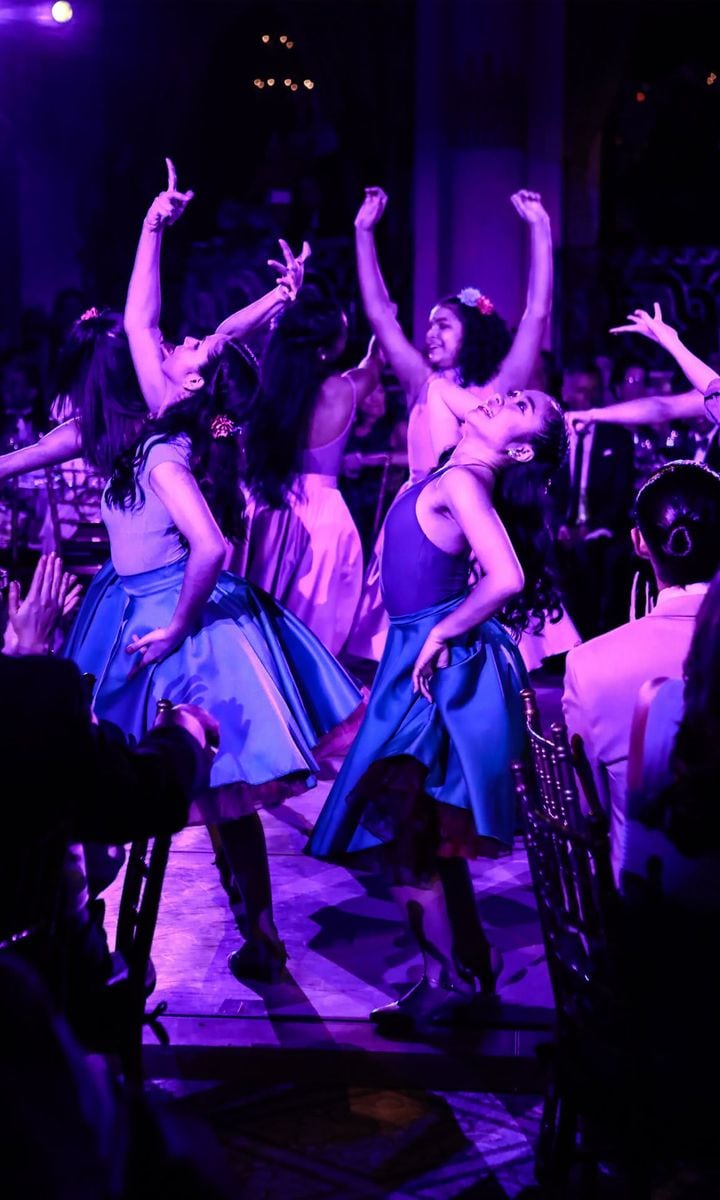Over the past five decades, Ballet Hispánico has been highlighting the richness of the Latinx culture. Considered as one of America’s Cultural Treasures, the dance company based in Manhattan explores and celebrates the community’s diversity without the trappings of stereotypes.
The organization was founded by Puerto Rican/Mexican-American dancer and choreographer and National Medal of Arts recipient Tina Ramirez in 1970 to give contemporary Hispanic culture its place in American dance. “She had a group of young ladies who were learning flamenco, and she wanted to give them a platform to showcase their art and their ethnicity,” explains dancer Melissa Verdecia, as reported by NPR.
In 2009, acclaimed Cuban-American choreographer and former member of the Company, Eduardo Vilaro became Ballet Hispánico’s Artistic Director. For 11 years, Vilaro has been committed to continuing Ramirez’s vision. “Ramirez’s vision was to give access and to show artists beyond the stereotypes...” he explains. “Her heart has always been to give Hispanic and Latinx people the place they deserve in the American landscape.”
His vision isn’t far from Ramirez’s, and according to him, he wants to continue growing the company. “My vision is really about developing this platform further to serve the Latinx community by creating leadership — or leaders.”
When the COVID-19 pandemic hit, Vilaro adapted to the new norm by using technology in his favor. “I went into my immigrant mode,” Vilaro says, according to NPR. “How do you survive? What do we have to do?”
“Immediately, we went into free programming that we shared on our social media, says Michelle Manzanales, a choreographer and director of Ballet Hispánico‘s School of Dance. “Because we knew how important it was for our students and for our community to continue to dance, to continue to connect.”
Through the company, Vilaro introduced #BUnidos, a virtual programming that offers daily video series that explore dance and Latino cultures. These online efforts include Watch Parties of Company repertory, free classes, and interactive materials. The online lineup also offers Latino Pride Mondays, Salsa Tuesdays, Wepa Wednesdays, Tiki-Tiki Thursdays, and Fiesta Fridays. “Our dancers are ambassadors of the culture, but, you know, much more so of human kindness and connectivity,” he says.
“As a community of dancers, artists, and human beings, we are all in this together. We will persevere through this challenging time, and we hope that these videos provide a coping outlet, for you, for our followers and the community overall,” said Vilaro. “Now more than ever, it is important to band together in support of the arts. The personal and professional challenges that we have already endured and will continue to face over the next few weeks or months are significant. What we can take from this time of cancellations, uncertainty, and social distancing is a chance to use our creativity to connect with the community on a new level. Social distancing does not mean emotional distancing. Ballet Hispánico was founded upon and has always believed in the importance of reaching and servicing our community through dance and culture. As this pandemic occurs during our 50th Anniversary, it provides us with an opportunity to reflect on how far we have come, get back to our roots by reaching out to community near and far, and look forward to what is ahead.”
Longtime dancer Melissa Verdecia revealed the impact of Ballet Hispánico not only for Hispanics and Latinx but other cultures. “We were trained in seminars on how to engage with different demographics and age groups — I found that to be so useful and invaluable,” she says. “By the end of the class, we were able to pair one Palestinian girl with one Israeli girl,” she recalls. “People were having such a great time — it was evident in their body language. And it was a true testament to how verbal language is not our only source of communication, that art and movement and physical touch is what breaks down these barriers that our society has set up for us.”
Vilaro revealed that Ballet Hispánico is open to keep learning and educating about the Latinx community. “I’m interested in exploring the intersectionality of our diaspora ...” Vilaro says. “What is Latinx? And who are we? I’m much more interested in having the art catapult us into dialogues.”
,type=downsize)
